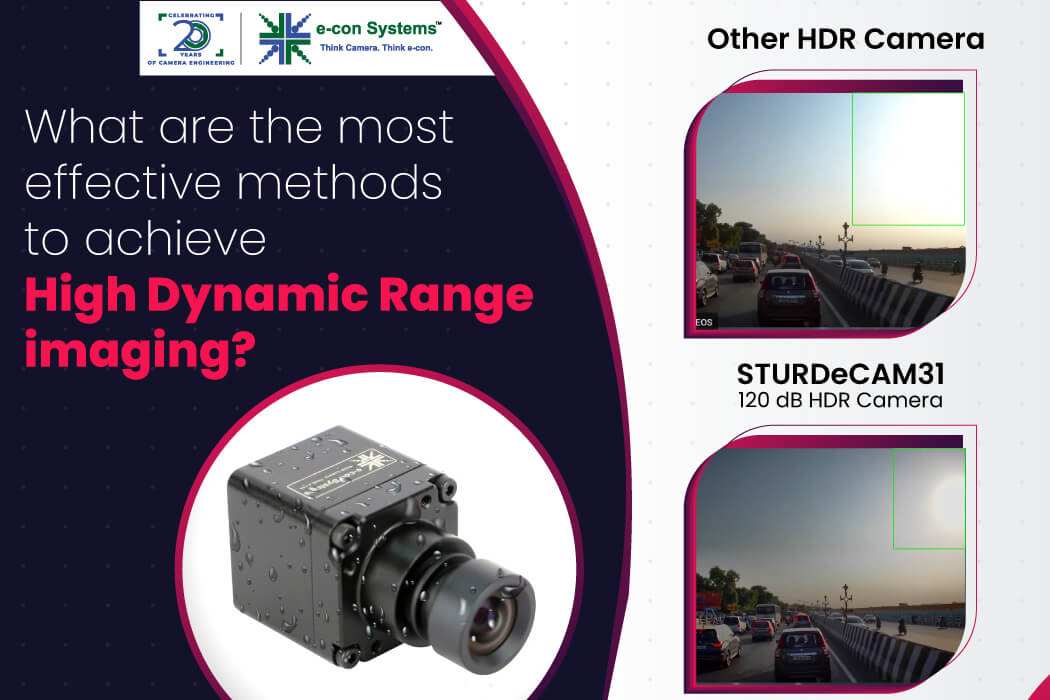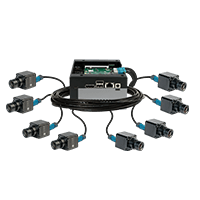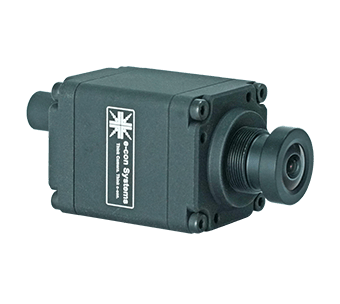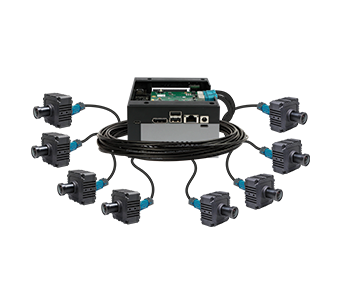As the demand for high-quality imaging grows, especially in embedded vision systems, understanding the primary methods to achieve High Dynamic Range (HDR) is pertinent. HDR imaging is about capturing more detail from scenes with varying light conditions. This helps cameras see the bright and dark parts of a scene clearly.
Through this blog, you can better understand these techniques and their practical applications. You’ll also get the pros and cons of each method, offering expert insights for those implementing or considering HDR in their systems.
First, what is dynamic range?
Dynamic range refers to the total spectrum of light captured from a specific scene. It’s a measure that quantifies the spread between an image’s darkest and brightest points. An HDR scene is characterized by bright regions (potentially sunlit areas or direct light sources) and dark areas (shadows or dimly lit regions). Traditional imaging systems may struggle to capture both these extremes in a single shot, often resulting in overexposed highlights or underexposed shadows.
Key components of HDR (High Dynamic Range)
Multi-shutter speed capture
HDR technology helps capture multiple images of the same scene using varied shutter speeds. The objective is to have one image that captures the bright areas correctly (fast shutter speed), another for the medium-lit areas (medium shutter speed), and a third for the dark areas (slow shutter speed). Each image thus records a different range of light intensities.
Image combination
Once the system has captured the different exposures, HDR technology combines these images. Using algorithms, it stitches together each exposure’s best parts to create a complete image. This composite image ensures that the bright and dark areas are well-represented, mitigating overexposure or underexposure issues.
Human eye mimicking
The human eye adjusts rapidly and perceives a wide range of light intensities in a scene, making it easy to scan environments with varied lighting while simultaneously understanding its details. HDR technology emulates this capability by combining multiple exposures.
Six effective ways to achieve High Dynamic Range imaging
1) Traditional Multi-Exposure Method
How it works: The traditional multi-exposure method captures two or three exposures of the same scene. The two-exposure approach captures one image for shadows and another for highlights, while the three-exposure method adds an extra shot for mid-tones. Post-processing then combines these exposures into a single HDR image.
Pros:
- Broader dynamic range from shadows to highlights
- More post-processing flexibility due to multiple exposures
- Enhanced image quality and reduced noise
Cons:
- Misalignment issues due to movement between shots
- Reduced frame rate due to capturing multiple images at different exposure levels.
- Time-consuming due to the need for multiple exposures and post-processing
- Imaging issues when merging exposures, especially with moving objects
2) Digital Overlap (DOL)
How it works: DOL captures multiple exposures simultaneously by overlapping pixel readout times. This allows the sensor to record different brightness levels, resulting in a wider dynamic range image.
Pros:
- Reduced motion artifacts with near-simultaneous exposures
- Single-shot data capture
- Detailed representation across shadows, mid-tones, and highlights
Cons:
- Hardware limitations related to specific camera sensors
- Complexity due to overlapping readout processes
- Noise issues in low-light scenarios
3) Digital Logarithmic Overlap (DLO)
How it works: DLO capitalizes on the logarithmic curve to enable sensors to capture both high and low light data in a single frame instead of linear pixel value readings.
Pros:
- Logarithmic responses to capture detailed information
- Reduced motion artifact risks
- Adaptive to varying scene lighting conditions
Cons:
- Requirement for unique sensors and proprietary algorithms
- Specific post-processing is necessary for full dynamic range realization
- Potential banding issues in certain tonal areas
4) Sub-Pixel/Split-Pixel
How it works: The sub-pixel/split-pixel method uses On-Chip Microlenses (OCL) within a single pixel. Each pixel contains a large and small OCL for capturing dark and bright regions. Combining signals from these two sources achieves an extensive dynamic range.
Pros:
- Blackouts in dark zones and blowouts in brightly lit areas
- Good image quality across different lighting conditions
- Reduced computational complexity, memory, and power consumption
Cons:
- Potential color artifacts in high-contrast areas
- Advanced processing might introduce delays
Looking for more information on the split-pixel technique? Check out our insightful blog on everything you need to know about split-pixel HDR technology.
5) Hyperlux
onsemi’s Hyperlux is a unique 2.1 µm super-exposure pixel image sensor family geared towards HDR imaging. It ensures SNR transitions remain above 30 dB, even at high temperatures (up to +100°C junction).
- Delivers exceptional low-light performance across a wide temperature range
- Incorporates a fully integrated LED flicker adjustment mechanism
- Offers the lowest power consumption in a minimal form factor
6) ClearHDR
Sony STARVIS 2’s ClearHDR technique captures two simultaneous images: one set at a low gain for bright areas and another at a high gain for dark zones. These two images are then synthesized into a single HDR image.
- Captures moving objects without introducing artifacts
- Features an increased saturation capacity
- Adapts to brightness changes, such as transitioning from night/day or entering/exiting tunnels
e-con Systems offers State-of-the-Art HDR Cameras
For 20+ years, e-con Systems has been designing, developing and manufacturing custom and off-the-shelf camera solutions. We have created a vast portfolio of HDR cameras, providing customization support, such as ISP fine-tuning, lens gluing/alignment, etc.
HDR USB cameras
- See3CAM_CU31 – 3MP 120dB HDR Sony® ISX031 camera
- See3CAM_CU81 – AR0821 4K HDR USB Camera With 1/2″ Sensor
- See3CAM_37CUGM – 3MP Monochrome Sony® IMX900 HDR Global Shutter Camera
- e-CAM83_USB – 4K High-Resolution HDR USB Camera Based on Sony IMX317
HDR camera modules
- Sony ISX031 Camera Module
- 3.2 MP Sony® Pregius S™ IMX900 Global Shutter Camera Module
- e-CAM82_CUMI0821_MOD – 8MP (4K) HDR MIPI Camera Module
- e-CAM27_CUMI290_MOD – 2MP IMX290 Camera Module
- e-CAM20_CU0230_MOD – 2MP Industrial-Grade HDR Camera Module
NVIDIA-based HDR cameras
- STURDeCAM88_CUOAGX – 4K 140dB HDR Camera for NVIDIA® Jetson AGX Orin™
- STURDeCAM31_CUOAGX – 3MP 120dB HDR NVIDIA® Jetson Orin™ Camera
- e-CAM31_CUOAGX – Sony ISX031 120dB HDR Camera for NVIDIA® Jetson AGX Orin™
- STURDeCAM34_CUOAGX – 3MP 140dB HDR Camera for NVIDIA® Jetson AGX Orin™
- e-CAM81_CUNX – 8MP HDR Camera for NVIDIA Jetson Xavier NX/TX2 NX/Nano
- NileCAM21_CUXVR – HDR GMSL2 Multi-Camera Solution for NVIDIA Jetson AGX Xavier
- e-CAM20_CUXVR – Sony STARVIS IMX290 Synchronized HDR Multi-Camera System
- SmarteCAM – IP66-Rated AI HDR Smart Camera
GMSL2 HDR cameras
- STURDeCAM88 – 4K 140dB HDR Front-View Camera for Mobility
- STURDeCAM31 – IP69K Automotive-Grade GMSL2 HDR Camera with LFM
- STURDeCAM34 – 3MP AR0341AT 140dB HDR Camera Module
- STURDeCAM20 – IP67-Rated Full HD GMSL2 HDR Camera Module
- NileCAM21 – Full HDR GMSL2 HDR Camera Module with LFM
Smart HDR cameras
Check out our HDR cameras hub page to view the full list, or visit our Camera Selector page to our full portfolio.
If you need help integrating HDR cameras into your embedded vision applications, please write to camerasolutions@e-consystems.com.

Prabu is the Chief Technology Officer and Head of Camera Products at e-con Systems, and comes with a rich experience of more than 15 years in the embedded vision space. He brings to the table a deep knowledge in USB cameras, embedded vision cameras, vision algorithms and FPGAs. He has built 50+ camera solutions spanning various domains such as medical, industrial, agriculture, retail, biometrics, and more. He also comes with expertise in device driver development and BSP development. Currently, Prabu’s focus is to build smart camera solutions that power new age AI based applications.







